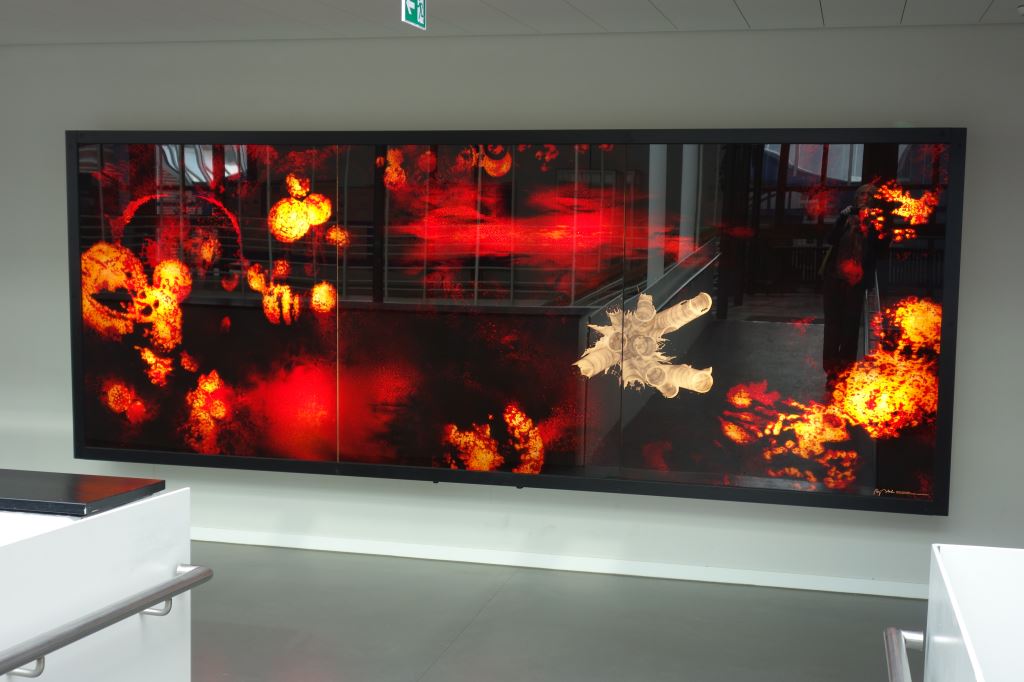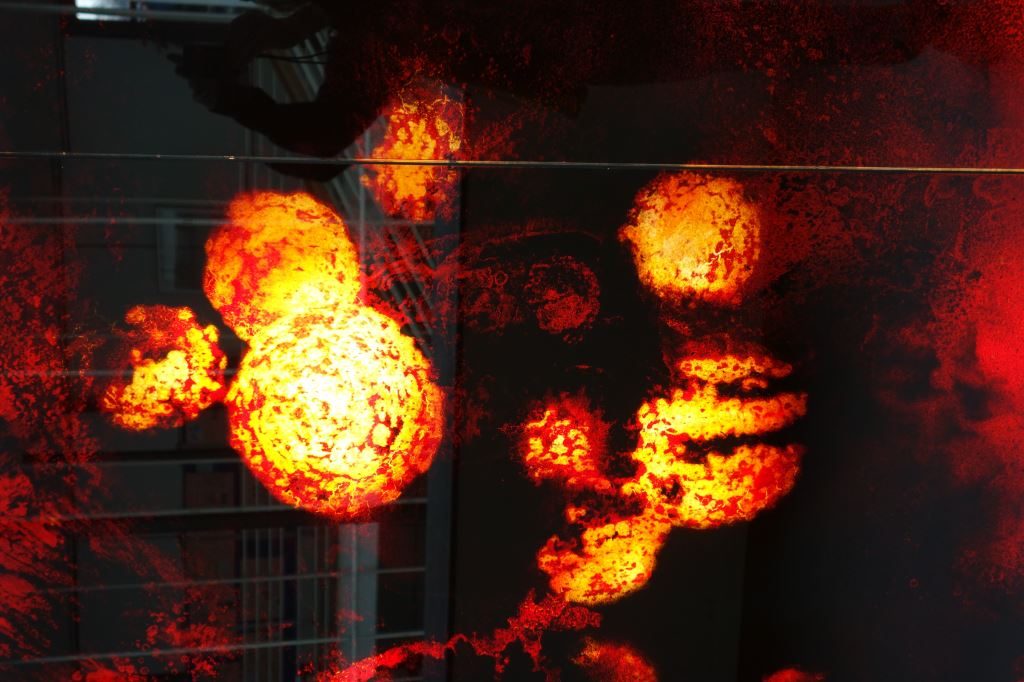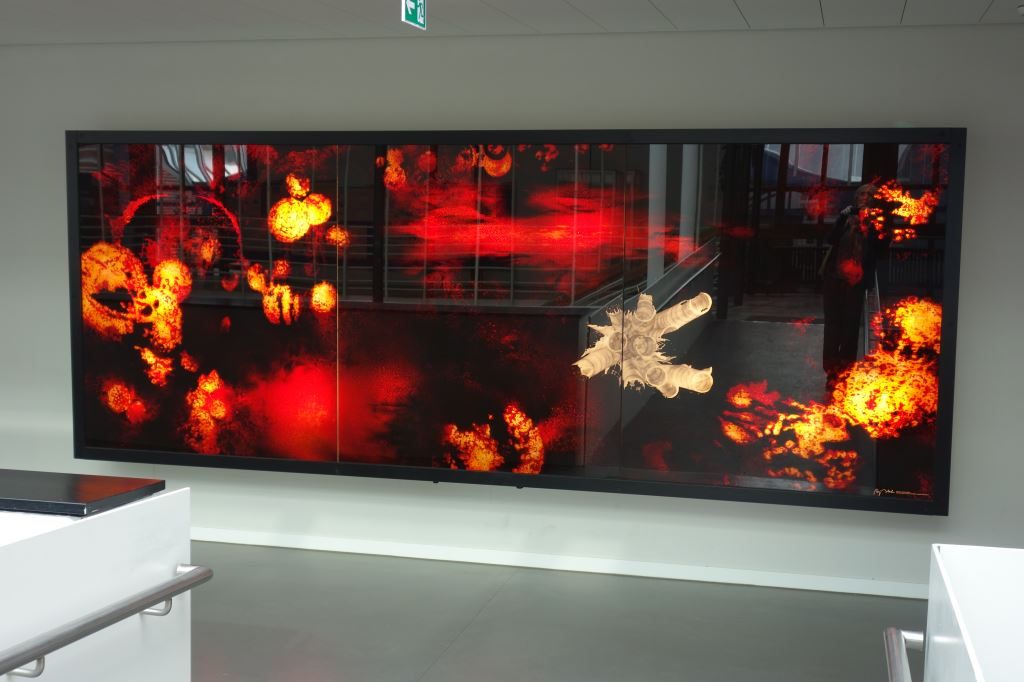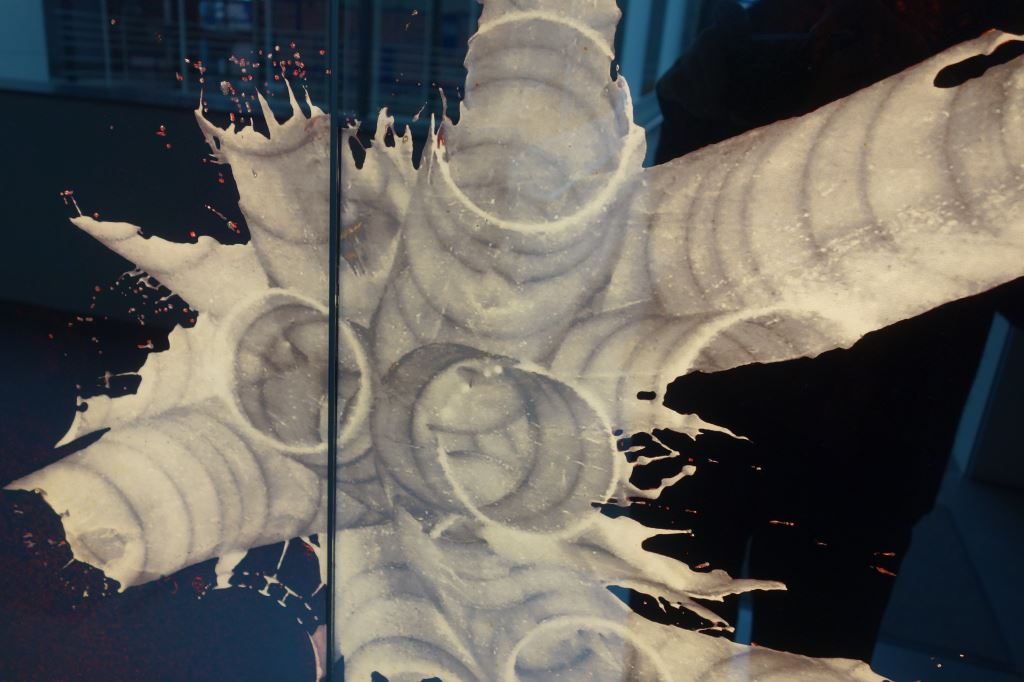Derix Glasstudios & artist Margit Abele produce extraordinary piece of “public art”
The luminous glass wall painting named “Saat”, (German: seed), by the artist Mrs. Margit Abele has been installed in November 2016 within the new building constructions of the Max-Planck-Gymnasium in Karlsruhe. An important source of inspiration for the art project was the founder of quantum physics and the eponym of the secondary school: Max Planck. The 150 x 400 x 30 cm glass wall painting is the new and extraordinary eye-catcher on the first floor of the secondary school – which is dedicated to engaged teachers and courageous pupils.
“May the seed germinate”: The history of the rotating protoplasm
For four months now, the luminous glass wall painting “Saat” decorates the center of the Max Planck Gymnasium in Karlsruhe, which was realized by the artist Margit Abele in cooperation with Derix Glasstudios. The art design was inspired not only by the successes of Max Planck but also by the remarkable art profile of the Gymnasium with its astronomical observatory and by the “lightness and transparency, the floating of the extension building with its generous glazing. On the dark background of the glass wall panel several luminous protoplasm are rotating in an orbit, reminding of planets.
Thanks to the smooth, glossy surface of the panel, reflections of the surroundings are reflected in the “glowing darkness” of the painting – and thus become part of the piece of art. The viewers are not only taken into the orbit, but also leave their familiar surroundings and dive into a strange, pathless universe. The artist Margit Abele explains: “Saat”, is dedicated to those teachers, who make young people curious and strong enough to enter foreign territories and of course for students who dare to follow their own star.
Public art – Derix Glasstudios Artistic designs in glass
The masterpiece is mounted on the large wall surface of the first floor within the new part of the building, to insure the appropriate effect.
The area of the vitreous, two-storey building, which connects the primal building with the new building, ideally suits as place of presentation, because this is precisely the place where a bridge leads you directly from the classrooms to the glass wall picture. “Saat” is the focus of the secondary school and is already visible from the staircase and from a bigger distance.
In order to intensify the overall impression as well as the distance effect, the glass wall picture is backlit. Within our studio, the core of our Art glass studios, the artistic designs were realized in glass: Three ESG float glass components form the basis of the glass wall picture. The different color layers were processed according to the template and burned to the desired density.
To increase the effect, our experts provided some picture elements with a digital ceramic print before painting. The individual panels were securized and Heatsoak tested.
The glass painting is fixed with a robust metal support and a white panel, 30 cm in front of the white wall and is evenly illuminated with LED light panels.
The Derix Glasstudios project teams have got many years of experience realizing public art, constantly being involved in realizations of various projects in collaboration with artists and architects around the world. One of the most famous project is e.g., the central underground station “Formosa Boulevard” in Taiwan. If you want to make the distinctive “effect of designed light noticeable”, we would be glad to refer you to our specialists – we are always looking forward to exciting and extraordinary projects, creating new and inspiring objects to impress the world with glass art.




